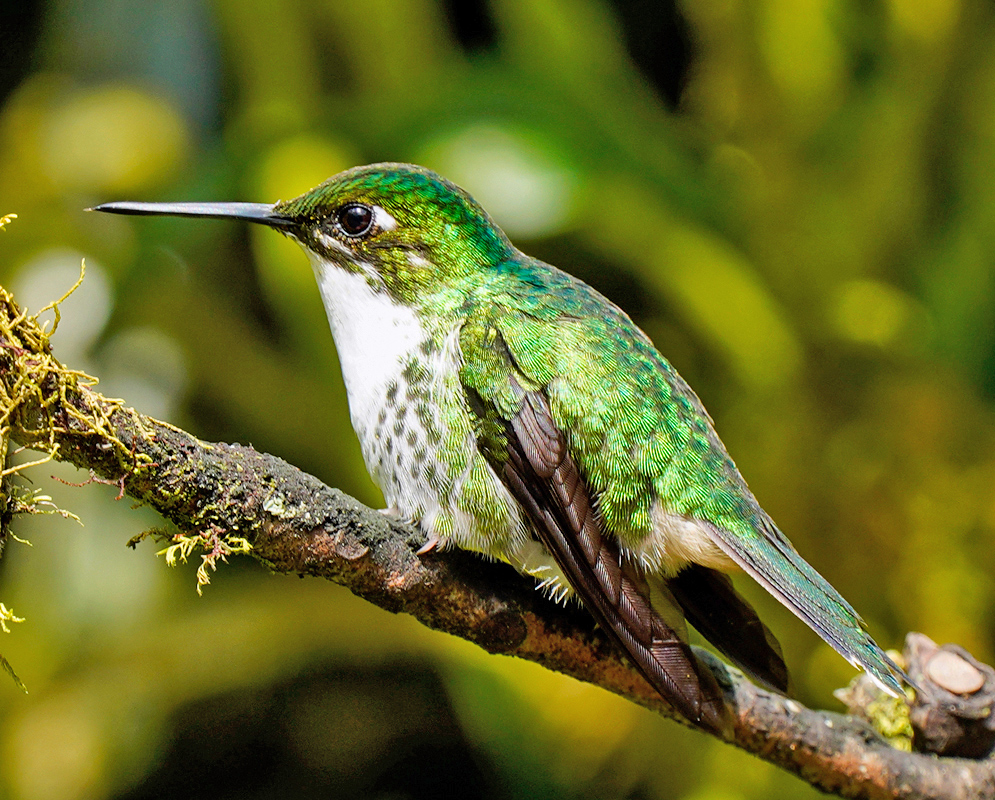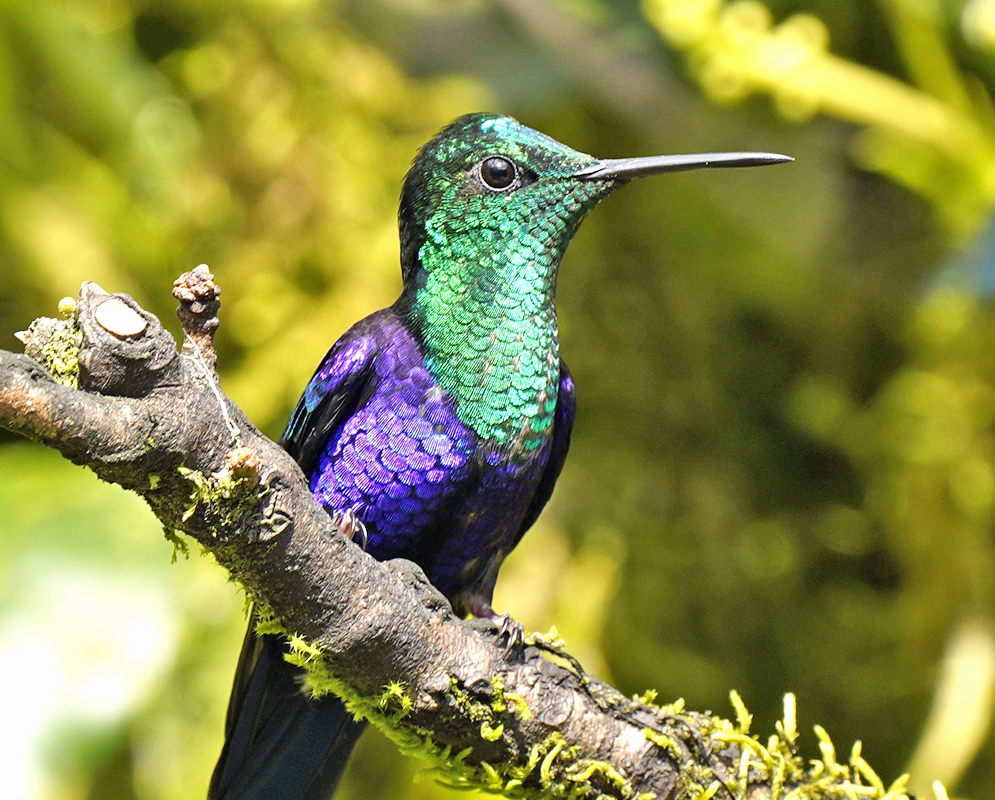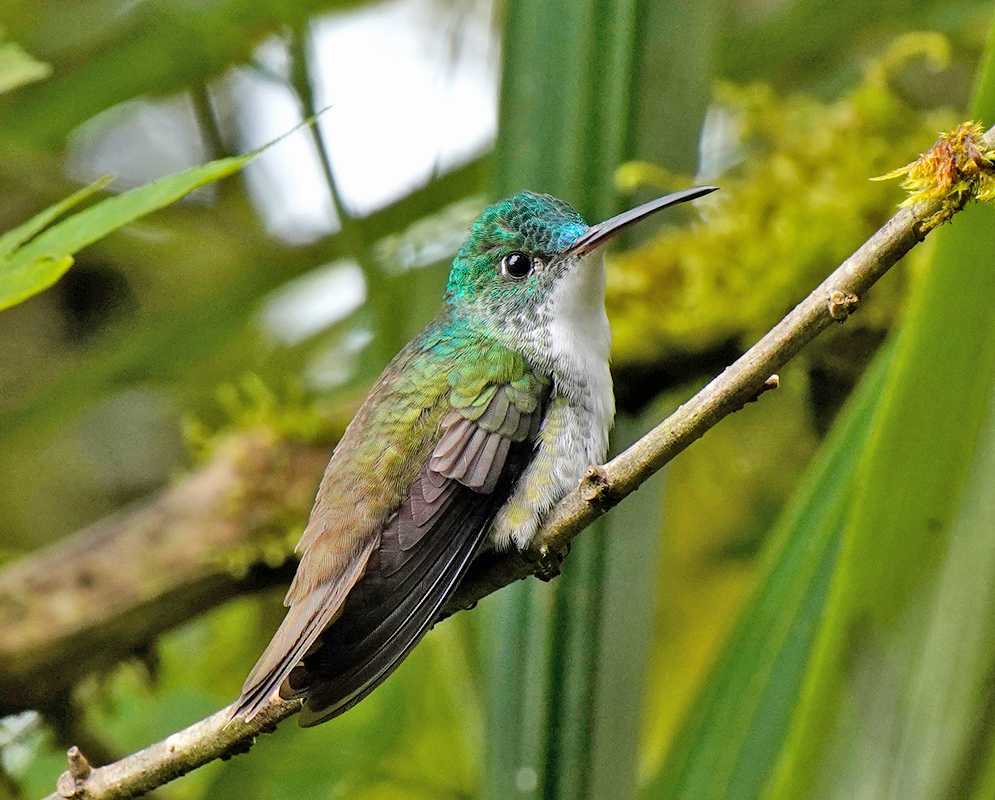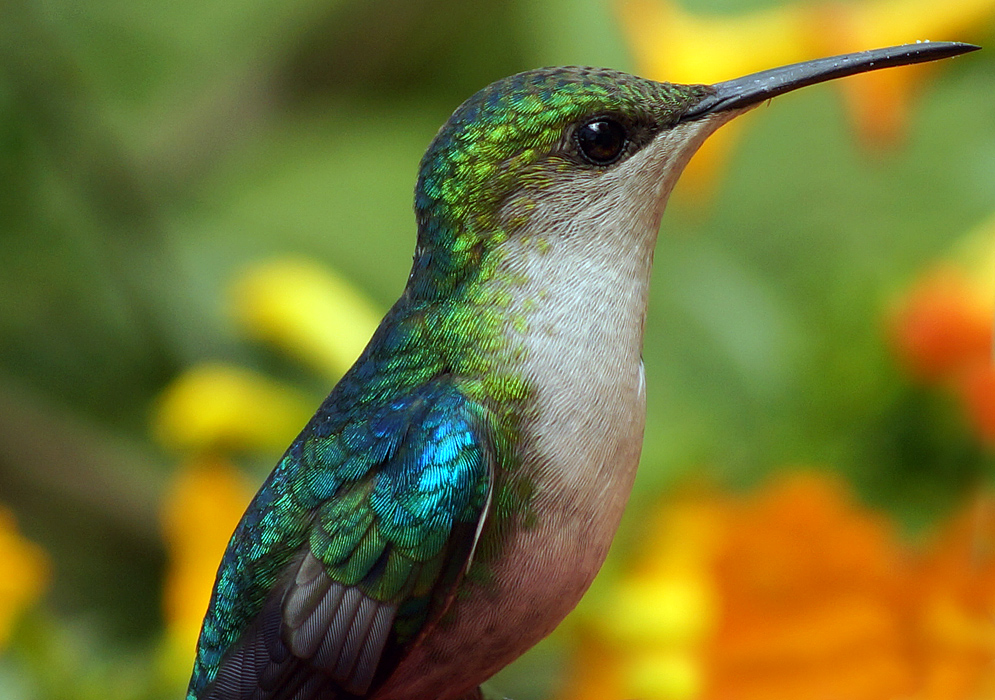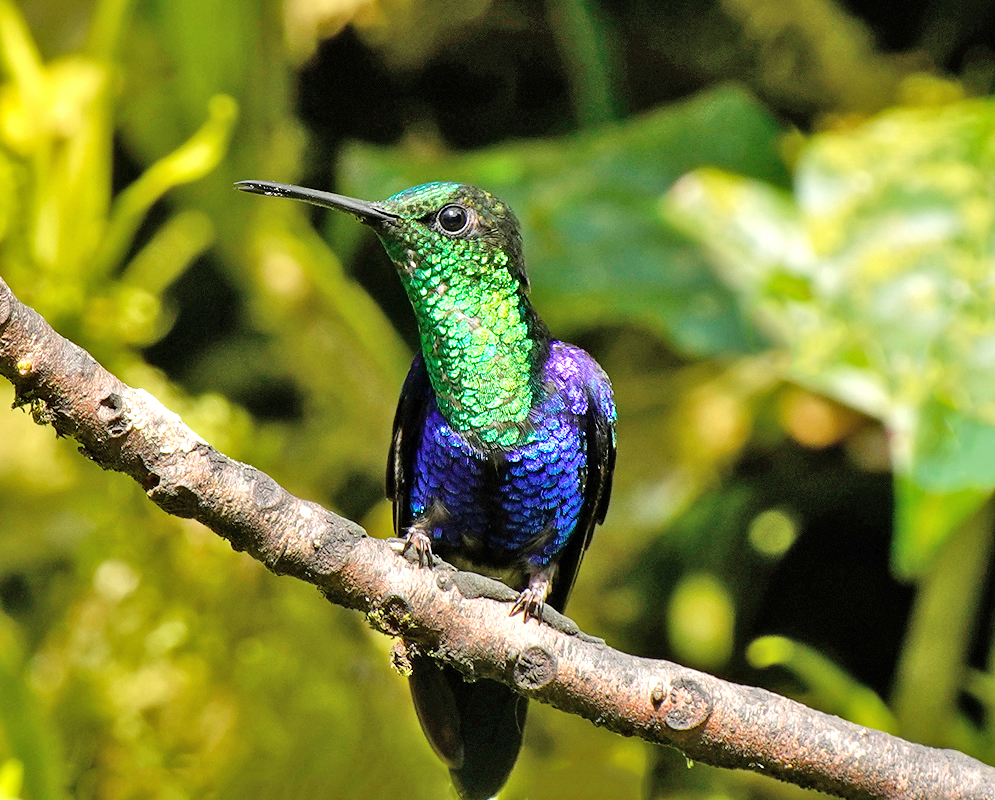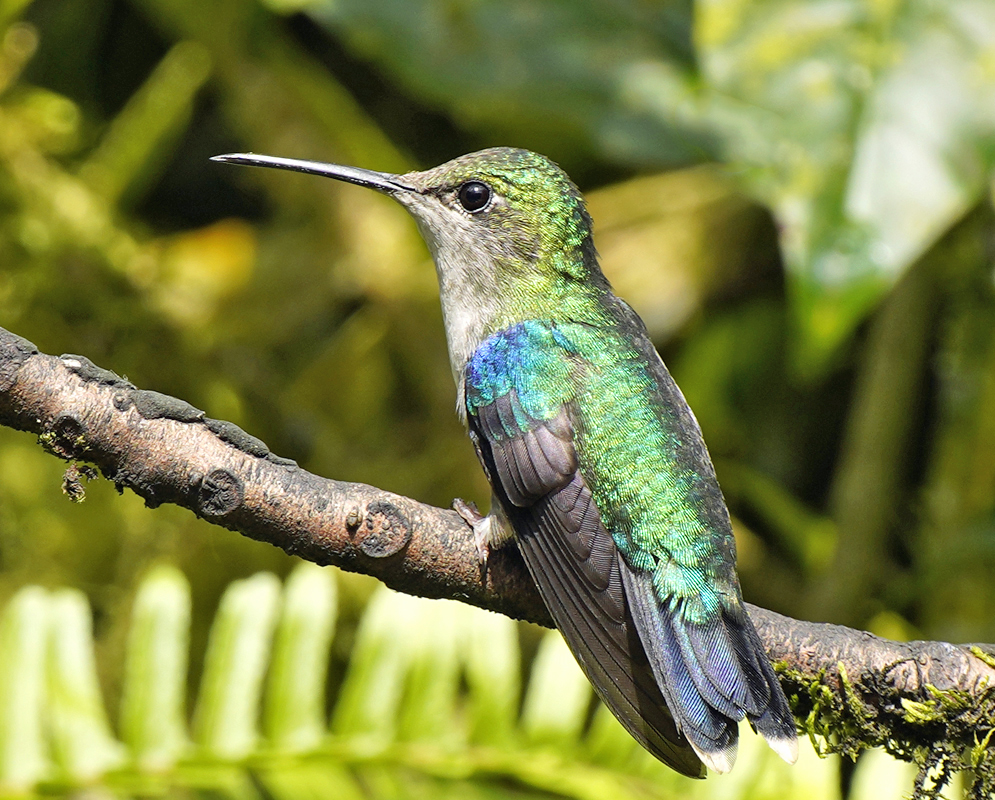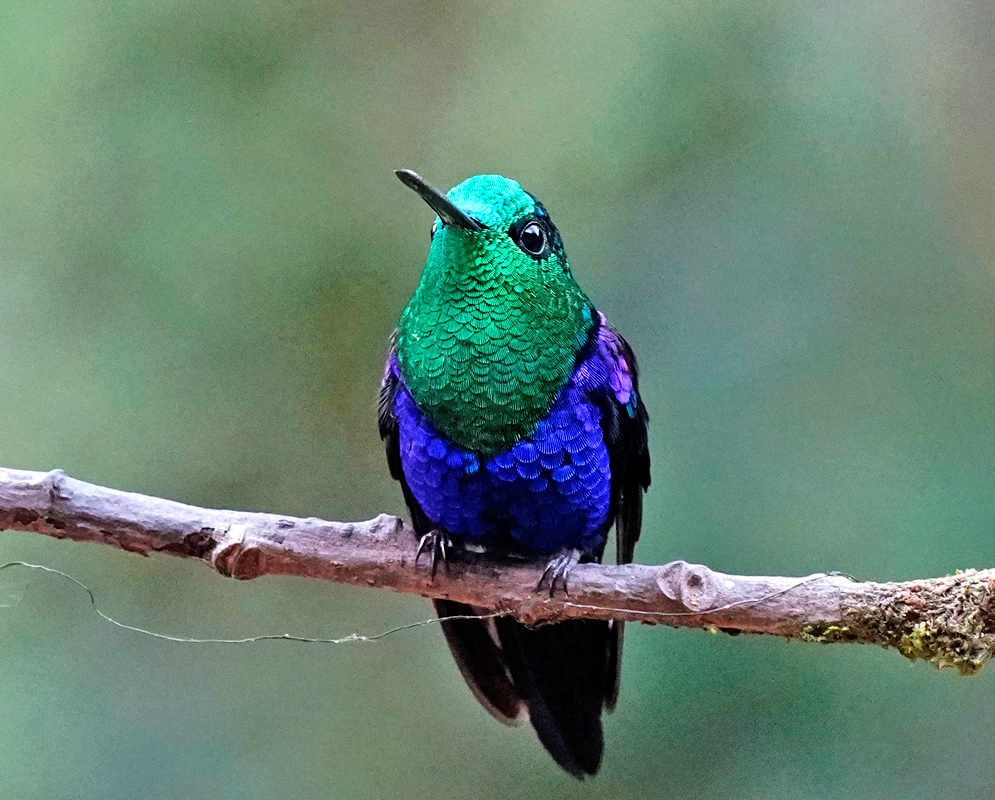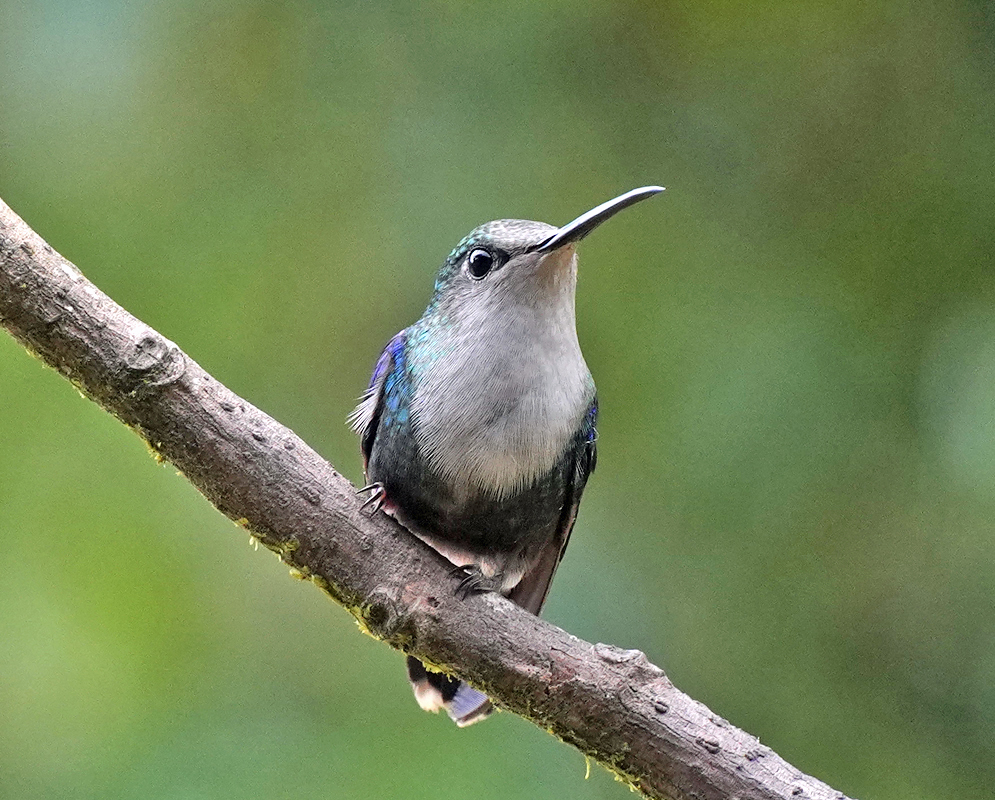This post has 11 Simple Fields-fields attached. Show fields.
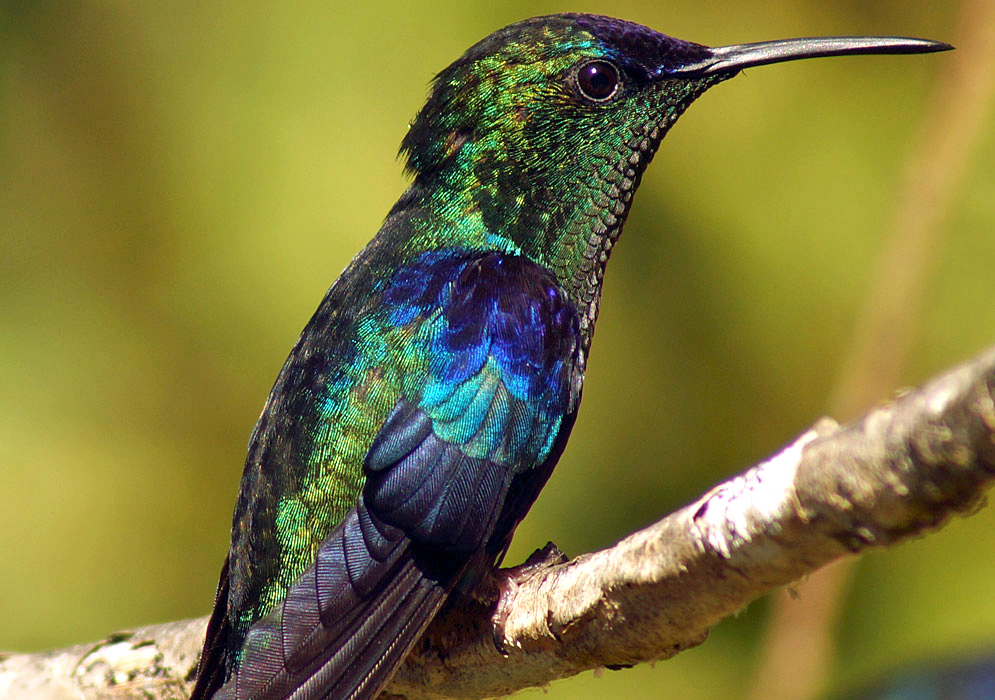
The Crowned Woodnymph is a visually striking species of hummingbird belonging to the "emeralds" tribe within the subfamily Trochilinae. Males of this species range from 3.7 to 4.5 inches in length and weigh between 0.14 to 0.19 ounces, while females are slightly smaller, measuring 3.3 to 3.6 inches and weighing 0.12 to 0.15 ounces. Adult males are characterized by their violet forehead, crown, upper back, and belly, and a dark blue-black, deeply forked tail. Females, on the other hand, display bright green upperparts, a pale gray throat and chest, a darker gray belly, and a blue-black tail with white tips on the outer feathers. Immature birds of both sexes exhibit less vivid coloring. The Crowned Woodnymph is distributed across a wide range from Belize and Guatemala to northern Peru, with several recognized subspecies inhabiting specific regions. These subspecies include T. c. townsendi in eastern Guatemala and Belize to southeastern Honduras, T. c. venusta in eastern Nicaragua to central Panama, and others across Colombia, Venezuela, Ecuador, and Peru. Their natural habitat consists of the interiors, edges, and clearings of humid primary and mature secondary forests, as well as semi-open landscapes such as coffee and cacao plantations and gardens, while avoiding open scrublands. The Crowned Woodnymph's diet primarily consists of nectar. They forage in covered or semi-open areas rather than open spaces. In addition to nectar, they also feed on small arthropods, capturing them through hawking from a perch, usually in the canopy or along edges and gaps. Interestingly, females are more aggressive than males in defending their territories and are more active in gleaning prey from foliage. Their nests, typically positioned on a horizontal twig under a leaf and up to 20 feet above ground, are intricately constructed cups of treefern scales and plant down bound with spiderweb, adorned with lichen and moss on the outside. Each clutch usually contains two eggs. The IUCN has assessed the Crowned Woodnymph as being of Least Concern. It is described as one of the most common forest hummingbirds over much of its range, although it is uncommon in Peru.
